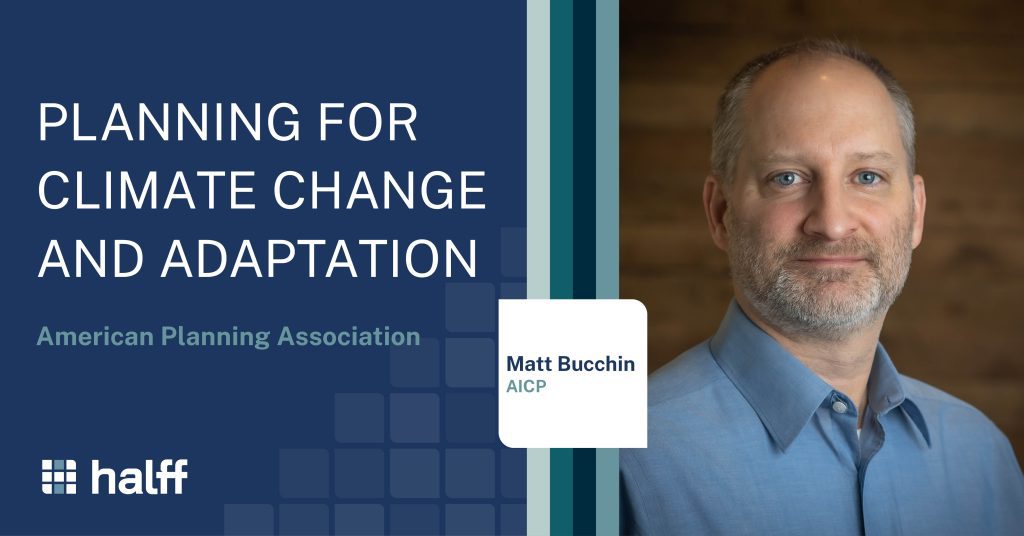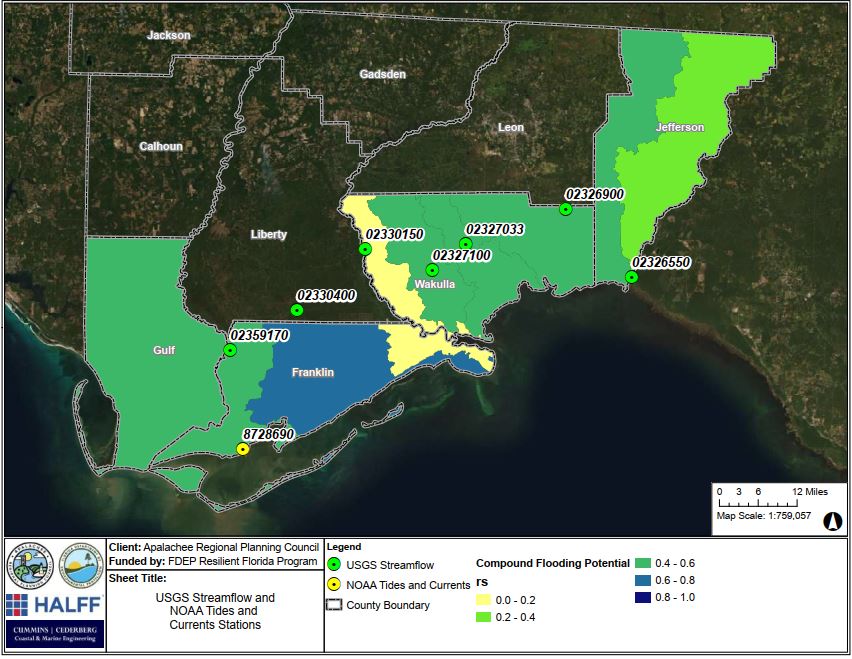Halff’s Matt Bucchin authors APA’s ‘Planning for Climate Mitigation and Adaptation’
Every day we are increasingly seeing the impacts of a changing climate. We see it most visibly in the form of more frequent and intensive heat waves, wildfires, droughts, and inland and coastal flooding. For our citizens, these frequently occurring events are impacting overall quality of life and quickly becoming accepted as the new normal. For our communities, it is getting more expensive to retroactively respond to these changing conditions and spurring new conversations about how to do things differently—from where and how we develop, to how we get around, to even what type of infrastructure we need. The American Planning Association’s recent 165-page report, Planning for Climate Mitigation and Adaptation, offers 10 chapters of in-depth information and 12 Insights highlighting real-world examples of the climate challenges and issues we face today and how our communities can respond to solve them.
This report was written by Halff’s Matt Bucchin, Planning and Landscape Architecture regional practice leader and was distributed to APA’s 40,000 members from across 90 countries. Developed through more than three years of research, Bucchin delivers comprehensive insights and strategies in this easy-to-read report for planners and community leaders. It “provides an overview of the necessary information and tools needed by planners to take leadership roles in helping our communities respond to a changing climate.”
The report is now available for purchase and download at planning.org.
Climate Mitigation vs. Adaptation
Climate mitigation is the process of reducing negative factors, such as greenhouse gas emissions, to lessen future harmful impacts on our communities and the environment. In other words, it is action which keeps climate change from getting worse. Examples include:
-
- Reducing energy and water use
- Using cleaner and renewable sources
- Protecting natural resources
- Developing technologies that capture and store carbon dioxide
- Improving conventional designs
Climate adaptation involves anticipating the impacts of a changing climate on a community and taking action to reduce future risk and vulnerability. Examples include:
-
- Building a sea wall or installing nature-based solutions to protect from flooding
- Raising buildings and infrastructure above the base flood elevation
- Building and designing for extreme heat
- Developing vulnerability assessments and adaptation plans
These two strategies, when used in harmony with each other, will help prepare our communities for a more resilient future.
Climate Adaptation in Action: Apalachee Regional Planning Council (ARPC) Vulnerability Assessment
The Regional Vulnerability Assessment of Florida’s Apalachee Region is a recent example of climate adaptation planning by Halff. Hurricane Michael caused about $18.4 billion in damages in Florida in 2018, wreaking havoc on the entire region and its flood systems. The hurricane resulted in extensive damage to the Apalachee Region.
Halff’s Senior Resilience Planner Sean Lahav led the effort to comprehensively evaluate current and future climate vulnerabilities and risk across the nine-county region. An interdisciplinary team of coastal, transportation, utility and environmental engineers, water resources experts, planners and GIS analysts assessed over 17,000 critical and regionally significant assets against different scenarios of climate hazard data including flooding, storm surge, sea level rise, precipitation and compound flooding. Halff completed the project in June 2022 as part of the Resilient Florida Program and identified many infrastructure vulnerabilities in the region for the Apalachee Regional Planning Council (ARPC).
Map for the Apalachee Regional Planning Council (ARPC) displays the compound flooding potential for the nine-county region in Florida.
This ARPC assessment now serves as a valuable baseline tool that equips local governments in the Apalachee Region to inform future coastal and inland vulnerability assessments, infrastructure priorities and fiscal decisions—all to reduce the future risks threatening these communities.
Halff’s planners and resilience staff from the Planning and Landscape Architecture practice can help you strategize projects and resources with environment-friendly approaches. Reach out to Regional Practice Leader Matt Bucchin, mBucchin@halff.com, or Senior Resilience Planner Sean Lahav, sLahav@halff.com.




